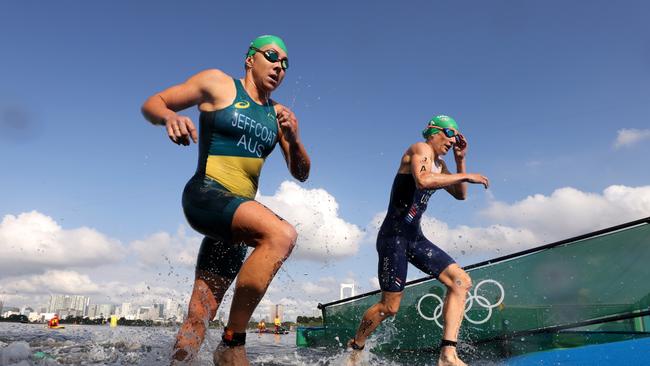Demand for egg freezing set to boost Australian fertility market
Fertility clinic revenues are outperforming the economy and set to climb, led by demand for egg freezing by women like Olympic triathlete Emma Jeffcoat.

Revenues at fertility clinics in Australia are projected to climb to $856m over the next five years driven by a rising maternal age and demand for the reproductive service.
A IBISWorld report said awareness of treatment success rates would help drive performance in the coming years.
The fertility clinics industry is out performing the economy, indicating it’s in the growth phase.
The industry’s contribution or value added to GDP is set to grow at annualised 4.5 per cent over 10 years through 2027 to 2028.
“New technologies and more frozen embryo use are improving fertility success rates, aiding growth,” the report said.

Arna Richardson, IBISWorld analyst said Australia’s declining fertility has contributed to rising trends of couples turning to IVF to start a family.
“The fertility treatment industry needs to be put within the context of Australia’s declining fertility rate and rising maternal (and paternal) birth ages,” Ms Richardson said.
“Fertility rates have been trending downwards since 1961 and below the required replacement rate since 1976,” she said.
Ms Richardson said awareness around age-related fertility issues has led to a surge in demand for elective egg freezing services.
“A growing awareness of potential age-related fertility issues is leading to a surge in demand for elective egg-freezing services for non-medical reasons, although many of these eggs are ultimately not used,” Ms Richardson said.
“The number of Frozen Embryo Transfer (FET) cycles has risen by nearly 65 per cent in the decade to 2022 to 23 and is one of the industry’s fastest-growing services.”

Australia is one of the few countries to provide significant government funding for treatments with the Federal Government’s Medicare Benefits Scheme (MBS) and the extended Medicare Safety Net subsidies available to cover some fertility costs for families.
“Favourable government funding policies have supported the industry and are likely to continue to do so, especially as state governments also seek to improve affordability and access to fertility services, including in regional areas,” Ms Richardson said.
In 2023 to 2024 the reproductive industry revenue is expected to reach $757m, with the major players for fertility in Australia Virtus Health $301m, Monash IVF $213.5m, Genea $95.0m account for 80 per cent of the industry along with City Fertility Centre $33.3m in 2023.
Virtus Health became the world’s first listed in-vitro fertilisation (IVF) provider in 2012 with brands trading under the company Melbourne IVF, IVF Australia, Queensland Fertility Group and TasIVF.
Social shifts have also contributed to changing demand for IVF, with an increase in the number of single women and same-sex couples seeking treatments.
Australian triathlete Emma Jeffcoat is training for the upcoming Paris Olympics but has also put at the top of her priority list safeguarding her future to start a family and enlisted the help of IVF Australia.

At age 12, Jeffcoat spent 12 months in hospital and was told it would become difficult for her to conceive naturally.
“It was my coach at 22 (who) suggested that I go and revisit it and just get an indication of where my baseline is at – for life after sport,” Jeffcoat said.
“I got my AMH levels and an egg count and an egg quality test done, and they came back okay – and they kind of indicated to me that I would need to look at going down the IVF path in the future.”
Six years after that initial consultation and an injury preventing Jeffcoat from competing she went back to IVF Australia and began the egg freezing process earlier last year.
“I went back to IVF Australia and did the same two tests again, and both my egg count and quality number came back and both had declined quite significantly,” she said.
“Under their advice that I straightaway start doing some rounds of egg retrieval and egg freezing.”

Jeffcoat said the decision to go through egg retrieval was “the best thing for myself and what I want in my future.”
“I think the biggest change was coming back and revisiting it at 28, because while I am single and not looking at kids at the minute it is more realistic projection of the minute of what I do want,” she said.





To join the conversation, please log in. Don't have an account? Register
Join the conversation, you are commenting as Logout